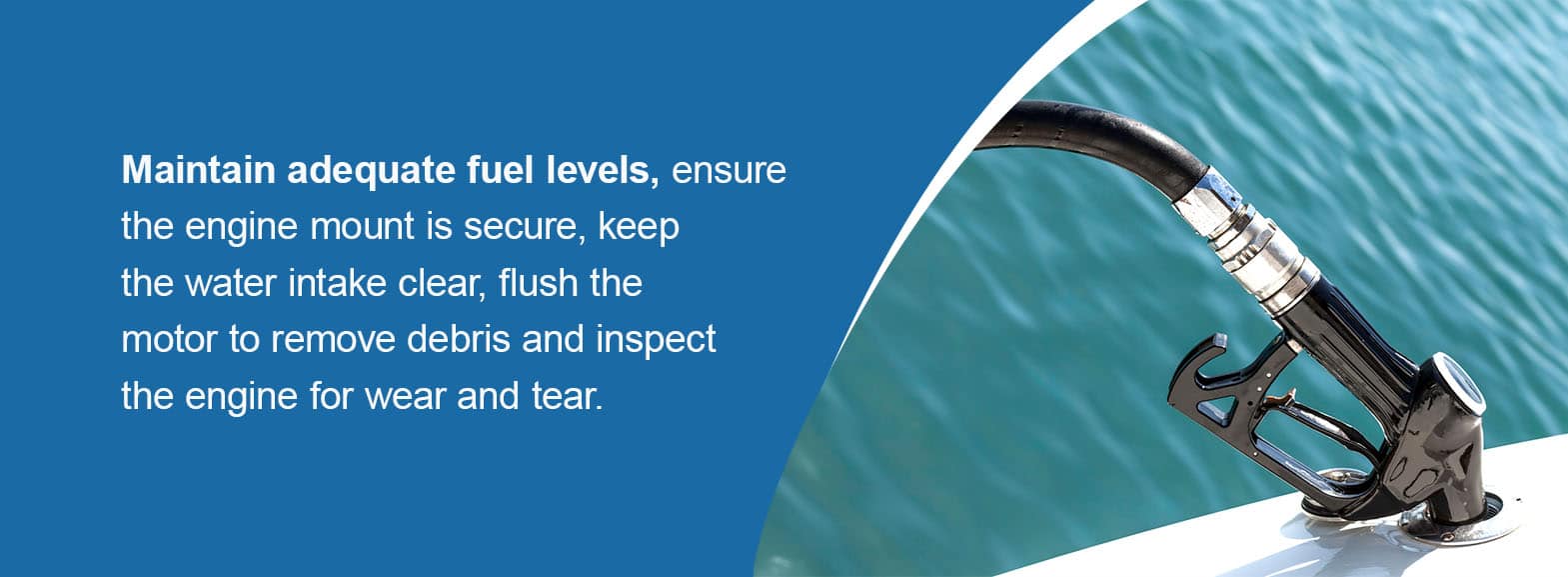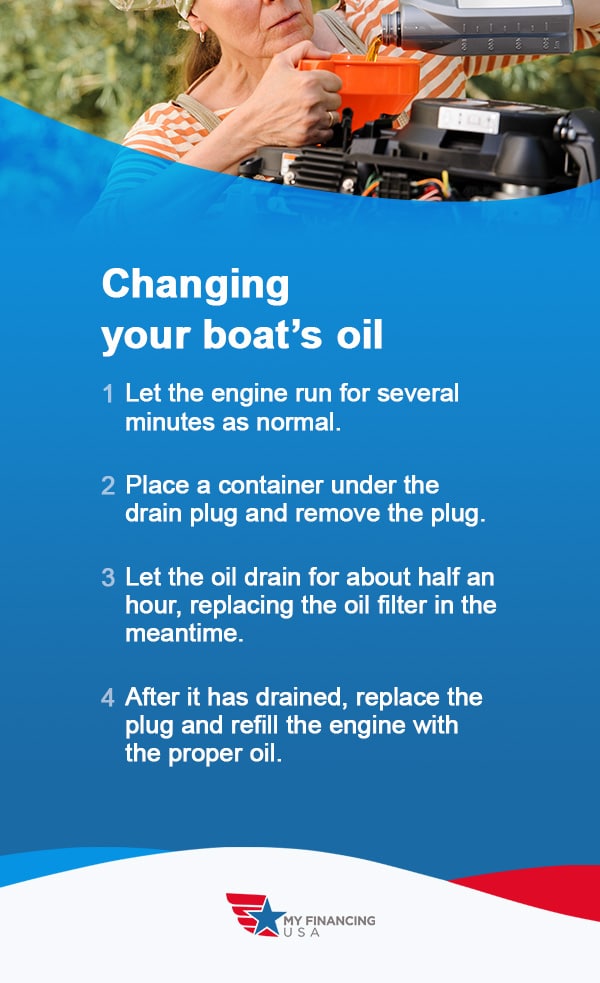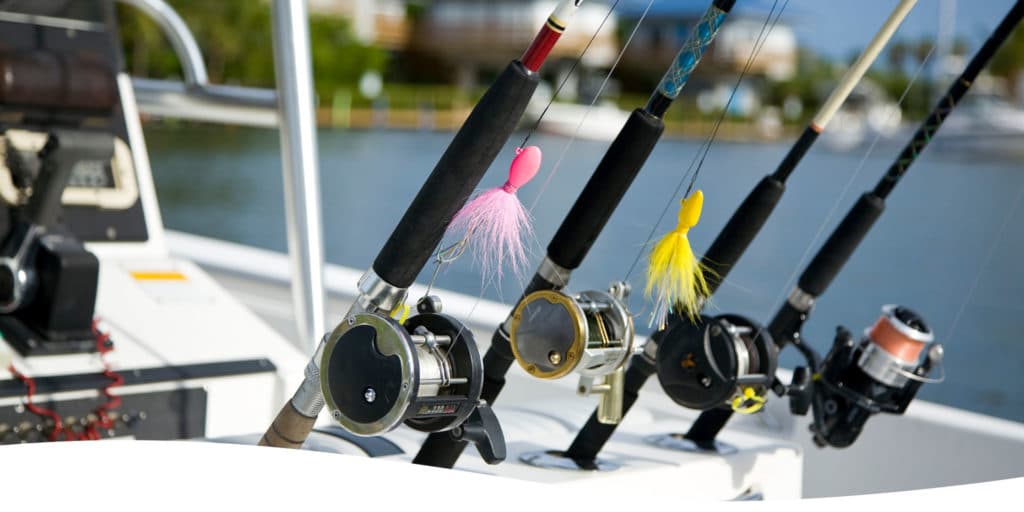Quick Navigation:
- The Importance of Boat Maintenance
- The Consequences of Neglecting Your Boat
- Boat Maintenance Checklist
- Freshwater vs. Saltwater Maintenance
- Ideal Boat Maintenance Schedule
- Home Maintenance vs. Professional Maintenance
Boating is one of the most popular pastimes across the United States. While owning a boat is fun and exciting, it also comes with a great deal of responsibility to ensure your boat stays in good condition. Boat maintenance is the best way to care for your boat over time and keep it running correctly, allowing you, your friends and your family to enjoy recreational boating for years to come.
Learn everything you need to know about boat maintenance to ensure your boat is in good health.
The Importance of Boat Maintenance
Like other vehicles, boats require regular tune-ups to stay in peak condition. Boat maintenance is crucial to your boat's performance, especially over time. Routine repairs will help keep your boat running smoothly for longer and extend the life of your boat. Since boats are an investment, you want to ensure you're taking care of yours to retain its value, which will be especially beneficial if you choose to sell your boat someday.
Boat maintenance is also crucial because you'll be much more likely to catch potential problems before they become significant. For example, when you perform regular maintenance, you get to know the ins and outs of your boat. When something is damaged or getting close to wearing down, you'll be much more likely to notice and make a timely repair rather than get blindsided by a broken-down boat. You'll also avoid unexpected costly repair bills.
You'll be a much safer boater on and off the water with a smooth-running, reliable boat. Maintenance ensures your boat is in good working order and won't become a hazard to you, your passengers and other boaters. Taking care of your boat can give you confidence that the vessel is safe to use during a day out on the water.
The Consequences of Neglecting Your Boat
Failure to keep up with boat maintenance will have several ramifications and adverse effects, taking a toll on your boat's appearance and performance. For example, not cleaning and waxing a fiberglass boat will give the gel coat finish a chalky appearance. Additionally, when the exterior coating wears down, you face a higher risk of corrosion and damage, which can affect numerous aspects of the boat, including the engine.
Without proper maintenance, your boat will run inefficiently and have a significantly shorter life span. The longer you put off routine tune-ups, the more you can expect to encounter performance issues that will likely be expensive to fix. Since maintenance keeps your boat in good overall condition, neglecting it can lower your boat's value as it ages. If you try to sell your boat down the road, you'll likely get much less for it.
Boat Maintenance Checklist
Proper boat maintenance involves caring for various parts, including the engine and propeller, and considering aspects like oil changes and storage. Here are some boat maintenance tips and areas to pay attention to.
Maintaining the Engine
The engine is the heart of your boat. The engine's performance can directly impact other boat parts, which means it needs to stay in optimal condition. While maintaining an engine may sound like a complicated task, some general knowledge and preventive measures can help keep your engine running smoothly. First, you should always check the manufacturer's recommendations — which you'll typically find in your owner's manual — so you know what's best for your boat's engine.
Regarding preventive maintenance, you should maintain adequate fuel levels, ensure the engine mount is secure, keep the water intake clear, flush the motor to remove debris and inspect the engine for wear and tear, among other tasks. For example, periodically check the sparkplugs, fuel lines, clamps and filters for rust, cracks and blockages. When every engine component is in good condition, you can expect a more enjoyable boating experience.

Aside from performing frequent inspections, flushing your motor is one of the best ways to maintain your engine, especially if you boat in saltwater. Dirt and sand can clog up the motor, causing severe issues throughout the engine. Regular flushes clear out the debris and ensure adequate flow.
Maintaining the Propeller
The condition of your boat's propeller can directly impact fuel economy and performance. If the propeller is dented or has fishing line tangled around the shaft, it will operate ineffectively. Regularly inspect the propeller for damage, debris and oil buildup. A few times a year, detach the shaft to remove debris, apply grease and help it rotate smoothly.
Before taking your boat out and after inspecting the propeller, check its connection to your engine and boat. The last thing you want is loose parts falling into the water.
Maintaining the Exterior
Your boat's exterior takes a beating, even when it's sitting at the dock. Maintaining the exterior primarily consists of keeping the boat clean, which helps keep the finish intact to protect the boat's structure. Cleaning your boat's hull removes any algae, barnacles or other debris, which also helps prevent the spread of invasive species when moving your boat from one body of water to another. Clean the exterior regularly, and remember to wax your fiberglass boat occasionally to maintain its finish and performance in the water.
Exterior maintenance also includes cleaning the upholstery. With high amounts of moisture, mold and mildew can quickly build up on your seats and carpeting. Drying off upholstered surfaces before leaving your boat helps prevent mold and mildew from growing and damaging your boat.
Changing the Oil

Just like a car, your boat needs regular oil changes. Staying on schedule with oil changes is critical to your engine's health. If you fail to consistently change the oil, your engine will be at risk of severe damage. Here are a few steps to follow if you choose to change the oil yourself:
- Let the engine run for several minutes as normal.
- Place a container under the drain plug and remove the plug.
- Let the oil drain for about half an hour, replacing the oil filter in the meantime.
- After it has drained, replace the plug and refill the engine with the proper oil.
Storing Your Boat
Boat storage is crucial to boat maintenance because proper storage protects your boat from damage during the off-season. Depending on the climate you live in or the area you use your boat in, you may choose from indoor, outdoor or on-the-water storage options.
Preparing your boat for storage helps ensure it stays in good condition and is ready to return to the water sooner in the spring. To ensure a smooth process in the spring and protect your boat while in storage, clean it beforehand and put a cover on it. Be sure to remove all valuable items and make any necessary repairs before storage so you're ready in the spring. You should also open drain plugs and faucets so moisture can drain out and leave your boat with a full fuel tank.
Freshwater vs. Saltwater Maintenance
Freshwater and saltwater boating vary in a few ways, including the maintenance your boat requires. Since freshwater has a less severe impact, freshwater boats typically require significantly less maintenance. They'll still need regular cleaning, waxing and servicing, though they generally won't require it as often as saltwater boats.
Saltwater boats often require more maintenance than freshwater boats because salt accelerates corrosion. Exposed metal will rust quickly as ocean spray and air take hold. However, corrosion can easily become a more significant issue without proper maintenance. Salt can penetrate fiberglass, internal engine components and wiring, putting your entire boat at risk of rust and severe damage.
If you boat in saltwater, it's crucial to clean your boat and flush the motor after coming out of the water. Saltwater is destructive, and if you let it sit, it will dry into a film and continue eating at your boat. Thoroughly cleaning your boat's exterior will remove the salt and help prevent extensive corrosion. Flushing your motor is especially crucial for maintaining a saltwater boat because any salt buildup in the motor will spread throughout the engine.
Try to stay on top of cleaning every part of your boat possible when boating in saltwater. It's best to clean the boat and flush the motor every time you remove your boat from the water to avoid having saltwater sitting in it more than necessary.
Ideal Boat Maintenance Schedule
To help you keep track of what tasks you've completed and when, keep your boat maintenance on a strict schedule. You'll need to take care of some chores more often than others, so a schedule helps you stay organized. For example, cleaning should happen after nearly every use, while you can schedule professional inspections much further apart. Here's a basic schedule the U.S. Boat Owner's Association recommends sticking to.
Every Use
You should complete some maintenance tasks every time you use your boat. Before taking your boat out, check that the propeller, hull, electrical systems, fire extinguishers, steering controls, bilge pump and battery are undamaged and working correctly. Also, top off your fuel and check the oil level before leaving the dock. If you detect any damage or if something is working improperly, address the issues before boating to prevent more extensive problems.
After each use, clean the deck and hull when taking your boat out of the water.

Every 20 Hours
Every 20 hours of use, you should complete a few tasks in addition to those mentioned above.
- Apply a decarbonizer to the fuel.
- Check and refill the gearcase/drive.
- Check for a proper engine RPM.
- Clean the boat's interior.
Every 50 Hours
Every 50 hours of use, take care of this checklist in addition to the things we listed above.
- Check fuel lines for degradation and alcohol.
- Clean bilge.
- Polish and wax the deck and hull.
- Ensure the cover/top is in good condition for storage purposes.
- Lubricate grease points.
- Check hydraulic fluid level and system condition, if applicable.
Every 100 Hours
Every 100 hours of use, here's what you should do alongside the tasks mentioned earlier.
- Check for rub rail damage and repair.
- Ensure stern eyes, bow eyes, deck fittings, rail fittings and cleats are tight and secure.
- Check for kinks/binds in your hydraulic or mechanical systems.
- Replace the water pump impeller.
- Lubricate all engine grease points.
- Touch up the paint.
- Check engine mounts and steering brackets.
- Treat your fuel for storage.
- Replace oil filters and change oil.
- Tighten all accessible fasteners and bolts.
- Check the linkage and synchronization.
- Have a professional inspection completed.
If you're uncomfortable performing any maintenance tasks yourself, having a professional handle your boat's maintenance is best.
Home Maintenance vs. Professional Maintenance
While you should have your boat professionally inspected once every 100 hours of use or before every season, you can handle many maintenance tasks on your own at home. While some responsibilities require more mechanical knowledge than others, home maintenance is a viable option for many boat owners. For example, you can take care of simpler things like cleaning your boat after each use and conducting visual inspections from home or the boat dock.
Boat maintenance cost will vary depending on how much you complete at home and where you take your boat. Professional maintenance will cost a bit more because you pay for the labor, though it's typically more thorough. Experienced mechanics can easily resolve more advanced maintenance needs and can look more thoroughly at each aspect of your boat.
While you may save some money with DIY maintenance, you may need to purchase special tools or equipment. If you're a boater who values working on your boat and putting in the time, money and other resources to do so, you may consider learning more about boat maintenance and obtaining the necessary equipment. Others may feel more comfortable spending the money to have a professional maintain their boat. Regardless, be sure to always have a professional do your boat inspection.
Finance a New Boat With My Financing USA

If you're considering purchasing your first boat or want to upgrade from your current boat, My Financing USA is one of the best ways to finance your boat online. We work with individuals with good or bad credit. We'll help match you with a lender that best suits your needs and financial situation. Our application process is secure and easy — you can complete it in five minutes from your computer or mobile device. We'll work to review your application and contact you quickly to begin the process.
Learn more about how our boat financing process works or fill out an application to determine if you qualify.
Additional Resources on Boats:
- Boat Winterization Guide
- How to De-Winterize Your Boat
- Guide to Repowering Your Boat
- Guide to Different Types of Boats



